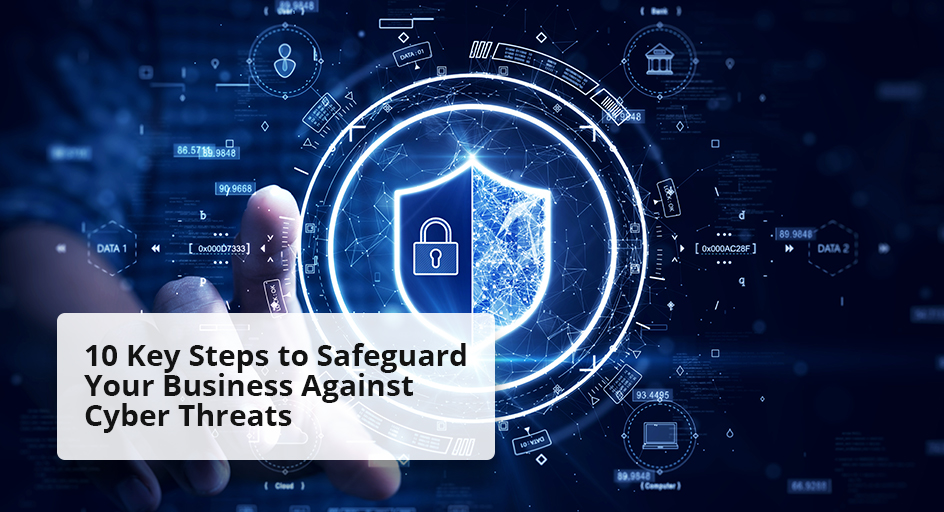As our businesses weave into the global digital fabric, cyber threats have increasingly become a formidable challenge. Businesses, irrespective of their size and sector, must acknowledge the reality of cyber threats and create robust defenses. It’s all about building a fortress in the digital space. But what role does insurance play in mitigating these cyber risks? Let’s dive deep into the subject.
Cyber Threats: A New Business Norm
Cyber threats are potential damages or losses inflicted by individuals or groups exploiting weaknesses in a company’s digital defenses. These threats can range from data breaches, where sensitive information is hijacked, to ransomware attacks, where a company’s digital systems are held hostage until a ransom is paid.
While the cyber threat landscape is menacing, a potent strategy to manage these risks is to leverage business insurance, specifically tailored for cyber threats. Cyber insurance acts as a financial bulwark, enabling companies to recuperate financially following a cyber-attack. It can cover costs related to restoring data, fixing systems, settling ransoms, and even managing public relations in the aftermath of a breach. However, having insurance is only one piece of the puzzle. A proactive, all-encompassing approach to cybersecurity is vital for any modern business strategy.
10 Key Steps to Shield Your Business Against Cyber Threats
1. Investing in Cyber Insurance
Cyber insurance should be a business imperative, not an afterthought. In the event of a severe cyber-attack, having cyber insurance can determine whether your business will stay afloat or sink. It provides a financial safety net, enabling your business to bounce back and resume normal operations faster.
2. Employee Cybersecurity Training
Employees can inadvertently become the weakest link in your cybersecurity chain. By providing regular training on cybersecurity best practices, employees can learn to identify phishing emails, create and manage strong passwords, and understand how to engage in safe online behavior. Thus, transforming them from potential liabilities into first-line defenders against cyber threats.
3. Using Strong and Unique Passwords
Strong, unique passwords are the first line of defense against cyber threats. By enforcing a rigorous password policy, you can drastically reduce the risk of unauthorized access to your business’ digital resources. Password managers can help in creating and storing complex passwords, significantly enhancing your digital security.
4. Regular Data Backups
Ensuring regular backups of crucial business data can be a lifesaver in the event of a cyber-attack resulting in data loss. Implement automated backup systems that store data in a secure, off-site location, providing an additional layer of security and enabling quick recovery.
5. Keeping Software Up-to-date
Outdated software often harbors vulnerabilities that cybercriminals can exploit. Establish a regular patch management schedule to ensure that all software and systems are updated promptly, reducing the risk of attacks.
6. Installing Firewalls and Security Software
Deploying firewalls and security software provides an extra layer of protection against cyber intrusions. These tools can prevent malicious traffic from reaching your network and alert you to any suspicious activity.
7. Using Secure Networks
Avoid using public Wi-Fi networks for conducting business operations. Instead, opt for secure, encrypted networks that protect your data from being intercepted. Consider using a VPN for additional security during remote work.
8. Limiting Access to Sensitive Information
Not all employees need access to all data. By restricting access to sensitive information, you can reduce the risk of that information falling into the wrong hands. Implement a robust access management policy that provides access only on a ‘need-to-know’ basis.
9. Implementing a Cybersecurity Plan
A well-structured cybersecurity plan can significantly reduce damage from cyber threats. Your plan should include preventive measures, response strategies for when an attack occurs, and recovery steps to follow after an attack. Regularly update and communicate this plan to all employees.
10. Regular Auditing and Testing of Cybersecurity Measures
Your cybersecurity strategy needs to be dynamic and adaptable to the ever-changing threat landscape. Regular audits and penetration tests can identify weak points in your defenses and highlight areas for improvement.
The Battle on Digital Frontlines
Cyber threats may appear daunting, but with a calculated and proactive approach to cybersecurity and the financial safety net that a comprehensive insurance policy provides, your business can stand resilient. It’s important to note that insurance policies may vary and undergo updates, and hence, what works for one business may not necessarily work for another. Always consult your insurance agent to ensure you have the right coverage that fits your specific needs.
In fortifying our digital frontiers, we not only protect our businesses but also contribute to a safer, more secure digital landscape for everyone. Through collective efforts, we can turn the tide against cyber threats.


